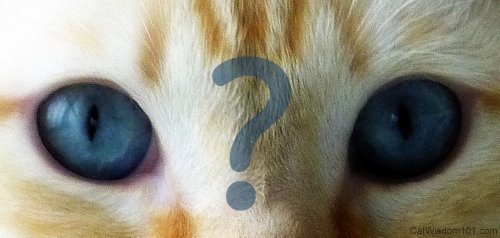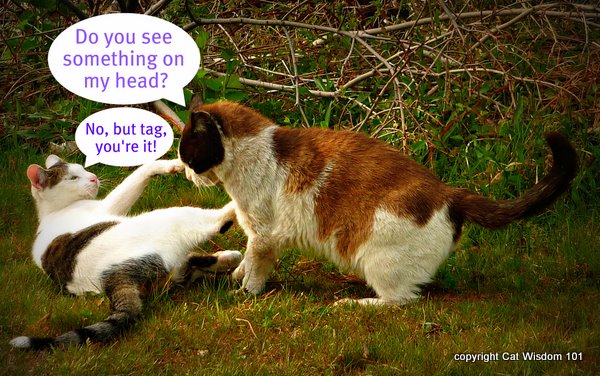Vet 101:The Shedding Blues
Are you singing the blues over your cat shedding? Our cat expert, veterinarian Rich Goldstein tackles excess feline shedding for this week’s Q & A. Have a vet 101 question about your kitty? Send it to Layla with Vet 101 in the subject line
Question:I’m used to being covered in cat hair. But how much is too much shedding? My semi-long haired, slightly overweight (overwise healthy) five-year-old male has dandruff and is shedding like crazy! He’s an indoor only cat and haven’t needed the air-con yet. I use a brush twice a week and about a handfull of fur comes out.
Answer;A human walks into a bar. The bartender says, “May I take your coat?” The patron replies, “I’m not wearing a coat. I have cats.”
Shedding is a normal part of the hair cycle of the cat. After a hair finishes its growth period, it stays in the hair follicle in the resting, or telogen, phase, until the next hair starts to grow in and push it out (i.e. the hair is shed). Many factors can affect the shedding process and the amount of hair shed, including change in season, allergies, medications, diet, skin or other medical conditions, pregnancy, and stress.
One important distinction to make when evaluating the shedding process in cats is to determine if it’s the primary or secondary hairs that are being shed. If you gently grab a small patch of fur and all of the hairs come out, leaving a bald spot, then medical issues (such as infection, ringworm, parasites, or other diseases) need to be investigated. If just the undercoat comes out, but there is no bald spot, then it may be normal shedding. However, if you are seeing dandruff or a “rough coat”, other skin issues, it’s best to have your vet take a look.
Regular grooming to get rid of the shed hair is very important in keeping your cat’s coat and skin in good shape, especially for longer-haired cats, or overweight cats that cannot adequately groom themselves. Most cats are good groomers and will do it without human assistance. Some cats love to be pampered and brushed with a soft bristle brush, or a curry comb (my cat loves the “oven mitt curry comb”). Some cats love to rub up against rubber combs that you can attach to the wall.
Excess accumulation of shed hair can result in matting, which can be painful and can result in skin infections. In some cases, periodic shaving of the fur (like a “lion cut”) by a professional groomer helps keep the cat’s coat in check. Supplements, such as vitamins, fatty acids, and a healthy diet are also good ways to help keep your cat’s coat and skin healthy.
And, one more thing that is essential to shedding-cat owners everywhere…sticky rollers.
Editor’s Note:Many older cats are sensitive to firm brushing along their spine or other bony areas.





8 Comments
Oui Oui
We think the shedding issue stopped people from turning kitties into fur coats back when people did those kind of barbaric things.
Glogirly & Katie
I’m probably one of the only cats in the blogosphere who doesn’t have a FURminator yet. Although I don’t have trouble with hairballs, my girl has it on her Katie-list. Hopefully in a lower position on the list than catnip and salmon.
; ) Katie
Abby
Most everyone in our house loves the brush!
purrs
>^,,^<
♥Abby♥Boo♥Ping♥Jinx♥Grace♥
CATachresis
Good advice! No problem here with brushing as Austin demands it every day, sometimes twice a day. He likes the sensation I think 🙂
Tinch
Not having much of a problem here with the three!
Brian
That was good stuff, thanks!
Fuzzy Tales
We’re shedding big time now, but the plus is we both love to be brushed and combed! 🙂
The mom’s a little less thrilled with the clouds of cat hair that waft up around us during the process, though. LOL.
Ballard
And of course brushing also helps to reduce hairballs.